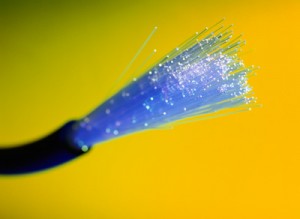 As it stands now, fibre optic cables provide the fastest broadband Internet to homes.
As it stands now, fibre optic cables provide the fastest broadband Internet to homes.
But researchers at the University of Southampton in the U.K. are pushing the possibilities of fibre even further to the near-ridiculous limits of 99.7 percent of the speed of light. If you think that’s fast, wait until you hear that this hollow fibre optic cable can put out data speeds of 10 terabytes per second.
Now that you have a fresh pair of trousers, we can tell you that the U.K. scientists pulled this off by hollowing out the inside of a regular fibre optic cable and filling it with air.
Scientists already knew that air-filled fibre cables can increase the speed of data transmission via light, but previous attempts have always resulted in data loss whenever the cables had to turn a corner. To fix this issue, the researchers improved the design of their hollow fibre tubes that limits the data loss to an acceptable 3.5 decibels per kilometre.
The researchers say these speeds would never be possible with a regular fibre optic cable because the silica glass causes the light to travel 31 percent slower than the full speed of light in a vacuum (186,282 miles per second speed or 299,792,458 meters per second).
This all sounds great, but we don’t expect to see these 10 terabyte per second speeds coming to our homes anytime soon. Most likely, these blistering fibre optic cables will first be used in data centres with racks of supercomputers.





